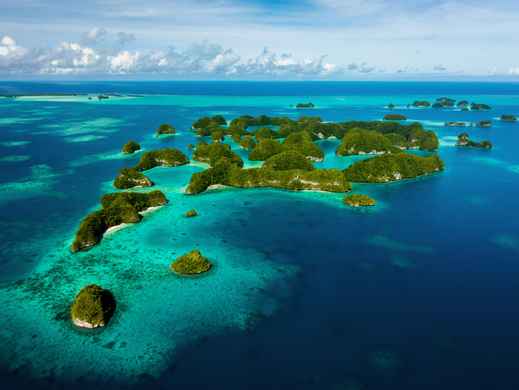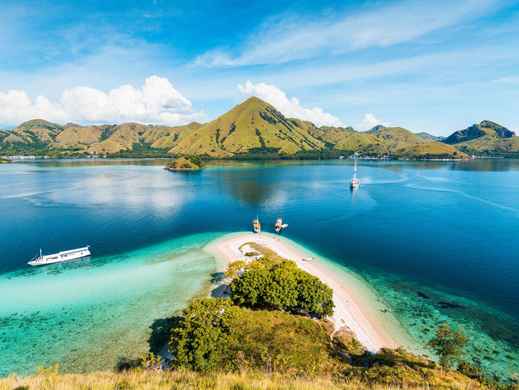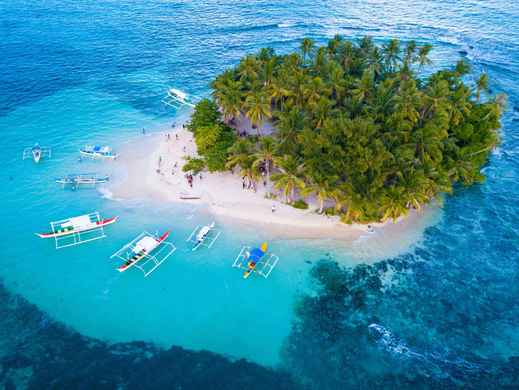


Papua New Guinea
Oceania
/
Papua New Guinea
Papua New Guinea, situated to the north of Australia, is renowned for its remarkable diversity. More than 850 indigenous local languages thrive alongside abundant biodiversity, and the lives of indigenous peoples remain deeply rooted in their rich traditions.
Papua New Guinea's landscape is mostly mountainous, which offers soothing and stunning natural views. The Owen Stanley Mountains and the Star Mountains provide ideal trekking and hiking areas for nature lovers. There are also charming beaches and islands, such as the Milne Bay Islands, Manus Island, and the New Britain Islands that can be used for snorkeling and diving.
The country’s extraordinary natural wealth is also characterized by vast and untouched tropical rainforests, namely the Sepik-Ramu National Park and the Kutubu National Park, which are home to a variety of endemic flora and fauna.
To fully experience the richness of cultural diversity, indulge in a variety of unique culinary delights such as umu, betel nut, sago, and fresh and delicious seafood. Papua New Guinea's uniqueness makes it a must-see tourist destination worth exploring.

Travel Tips for Papua New Guinea
What you need to know before traveling here
Practical Tips for Papua New Guinea
Things to prepare and best way to visit
Papua New Guinea's official language is English. This language is used as the language of instruction in government, education, and various aspects of public life. In addition, the Tok Pisin language is also widely spoken by the people of Papua New Guinea. Tok Pisin is a mix of English, Creole, and local languages in Papua New Guinea. This language is commonly mastered as a second language and is often used in everyday communication.
The legal currency used in Papua New Guinea is the Kina. The symbol for the Kina is "K," and the currency code is "PGK." The Kina was first introduced as the official currency of Papua New Guinea in 1975 when the country gained its independence from Australia.
Four days is enough time to experience the richness of nature and culture in Papua New Guinea. Here's a suggested itinerary: on days 1 and 2, visit the Papua New Guinea National Museum and Art Gallery as well as Port Moresby Nature Park to see endemic animals and plants. On days 3 and 4, immerse yourself in diving or snorkeling experiences amidst the vibrant underwater life of the Milne Bay Province.
If you have more time, consider exploring other islands of Papua New Guinea, such as New Britain, New Ireland, and Bougainville.
The diversity of natural resources has contributed to Papua New Guinea's success in presenting a wide array of authentic and delicious culinary specialties. When visiting, you must indulge in a variety of their staple culinary delights, such as laplap, a traditional baked dish made from cassava, or mumu, a mixture of meat, fish, and vegetables uniquely presented by being steamed in an underground pit and repeatedly heated over rocks.
Moreover, there are numerous other traditional culinary delights, including saksak, betel nut, as well as a variety of seafood seasoned with distinctive local spices.
Papua New Guinea offers a variety of ecotourism and sightseeing activities that emphasize natural and cultural preservation. Among them is bird watching, where this country is a paradise for bird watchers as there are more than 700 different species of birds. You can take part in a bird-watching tour to see some of the rare and endemic species.
You can also do other activities, such as rural tourism, which gives you the opportunity to learn more about the lives of the local people and participate in ecotourism activities in national parks.

Travel Tips for Papua New Guinea
More Destination Near Papua New Guinea











 Instagram
Instagram TikTok
TikTok Youtube
Youtube
